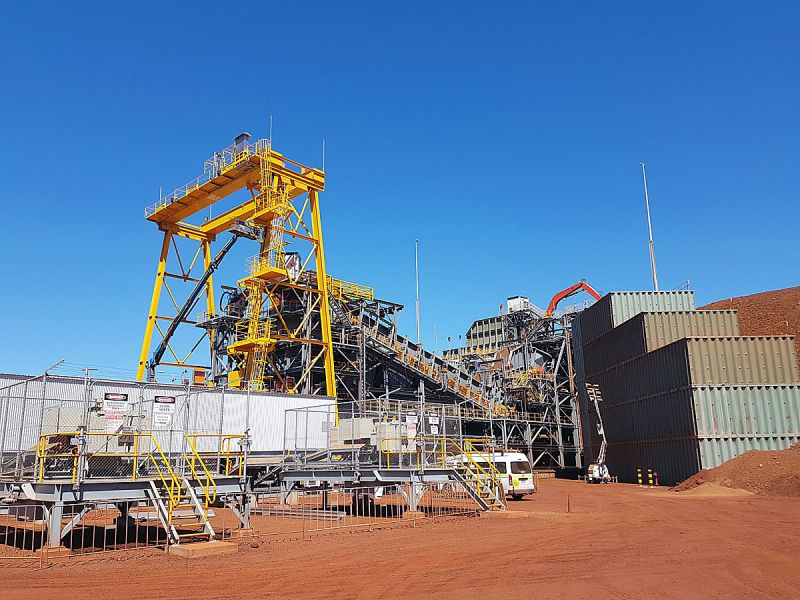In the red dust heart of Western Australia’s Pilbara, a new era has dawned. On Friday, Rio Tinto CEO Jakob Stausholm stood alongside the Yinhawangka People to officially open the company’s $2 billion Western Range iron ore mine — a moment that, he says, marks more than just the start of a new operation.
“It’s a new beginning,” Stausholm told attendees, referencing the shadow still cast by Rio’s 2020 destruction of the Juukan Gorge caves, a site of deep cultural importance. This time, things are different.
Western Range is Rio’s first project to be co-designed with Traditional Owners. It features a social, cultural, and heritage management plan shaped hand-in-hand with the Yinhawangka People. “It’s a new way of working,” Stausholm said. “One where we listen, learn, and build the future together — responsibly, safely, and with purpose.”
The mine, a joint venture between Rio (54%) and Chinese steel giant Baowu (46%), includes a new primary crusher and an 18-kilometre conveyor belt feeding into the existing Paraburdoo plant. It’s expected to produce up to 25 million tonnes of iron ore annually and extend the life of the Paraburdoo hub by two decades.
Laying the Groundwork for the Future
Western Range isn’t just a standalone project — it’s the first in a $13 billion pipeline of replacement mines set to secure Rio’s Pilbara iron ore dominance. The company greenlit the $1.8 billion Brockman Syncline 1 project in March, while Hope Downs 1 and West Angelas are moving through regulatory approvals.
Stausholm is confident these new mines won’t just sustain the Pilbara’s output — they’ll transform it. “If we get decarbonisation right, Pilbara iron will remain relevant for generations,” he said. That goal will be achieved through partnerships — not just with traditional landowners, but with global customers like Baowu — focused on decarbonising the iron ore supply chain.
It’s a timely message. Just last month, Fortescue Chairman Andrew Forrest warned the Pilbara could become a “wasteland” unless miners embrace carbon-free operations. Stausholm’s response: “We’re not just preserving the Pilbara — we’re future-proofing it.”
Leadership Shifts, Strategic Stability
The fanfare of the Western Range opening comes amid unexpected leadership changes. Stausholm announced his departure last month, sparking speculation of internal conflict — claims he firmly denies.
“There is no dis-alignment,” he told reporters. “Our board and executive team are united in vision, values, and strategy.” That includes Rio’s bold expansion into the lithium sector, which Stausholm called “the next pillar” of growth for the company. “Visionaries built Rio’s iron ore business 60 years ago,” he said. “Now it’s our turn to shape the next chapter.”
Pilbara vs Simandou: The Iron Ore Battleground
While global attention increasingly turns to Guinea’s massive Simandou project — set to start exports in November — analysts say Western Range is a sharp reminder of the Pilbara’s enduring strength.
Rio plans to invest over $13 billion in the region over the next five years, targeting 130 million tonnes of annual output. That’s nearly equal to Simandou’s 120 million tonnes, but at a fraction of the cost — and without the geopolitical risks.
Last week, Rio awarded a $157 million contract to NRW Holdings, paving the way for formal approval of the Hope Downs 2 and Bedded Hilltop mines, expected as early as July.
While Simandou demands $23.2 billion in capital — 70% more than Rio’s Pilbara investments — Australia’s mature infrastructure, stability, and logistics give the Pilbara a powerful edge. Even with rising labour costs, it remains the world’s lowest-cost producer of large-scale iron ore.
Eyes on 2026 — and Beyond
As Rio, BHP, Fortescue, and Hancock Prospecting race to replace aging mines, the Pilbara’s iron ore legacy shows no signs of fading. If anything, it’s evolving.
With green iron gaining momentum and visionary leadership setting the tone, the Pilbara may soon be known not just for what it built in the past — but for what it builds next.
In August 2026, the region will celebrate 60 years since its first iron ore shipment to Japan. It’s a milestone that underscores one thing: the Pilbara isn’t done yet. Not even close.


